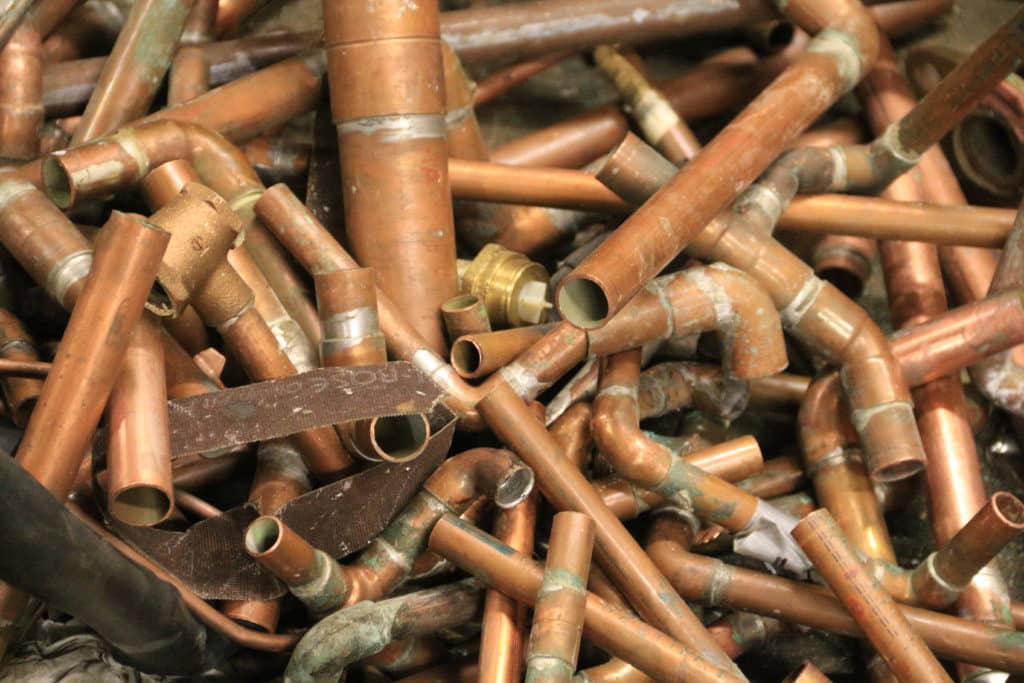Copper—“the red metal”–has long been considered an indicator of the economic outlook and business climate around the world. Copper is especially important to scrap metal recyclers who are in the business of copper recycling, selling and trading. In 2020, copper cathode prices and scrap copper prices dealt with volatility, due to swinging supply and demand as the result of tumultuous, historic economic disruptions from a global pandemic and the subsequent shut down in manufacturing around the world.
As the year winds down, where does copper stand as we face continued uncertainty at the outset of 2021?

The facts surrounding the production and use of copper help analysts forecast what may lie ahead:
- Copper is the third most widely used metal in the world.
- China is the world’s largest consumer of copper and makes up roughly half of global demand. The United States is the second-largest consumer of copper.
- South America accounts for over one third of the world’s copper production.
- The United States is largely self-sufficient in copper supply and produces about eight percent of the world’s copper
- Almost half of U.S. copper production comes from recycled copper scrap. Slightly over one-half of recycled copper is new, industrial scrap like chips and turnings. The rest is post-consumer scrap such as electrical cable and copper tubing.
- Copper is one of the few metals whose value and function do not decline with recycling. This makes copper recycling an important industry and copper scrap a valuable commodity. The market for copper scrap makes up roughly one third of the overall copper market.
- Copper is widely used for electronics, automobiles and construction.
- In recent years, advances in technology have increased copper demand. The auto industry, for instance, is using more copper in cars as they now contain more computer and electronic components which use copper wiring.
- Thirty years ago, a car would contain approximately 30 to 35 pounds of copper. Today, with the new components, a car now contains about 50 pounds of copper or more, and some cars may contain as much as 80 pounds of copper.
- Smartphones and other electronic consumer goods are requiring an increasing amount of copper.
When the COVID-19 pandemic struck, global manufacturing of these products came to a halt and demand for copper and other materials took a hit.
The global trade of copper scrap fell about 30 percent in the first half of 2020, due primarily to the pandemic. Then this fall, as parts of the global economy picked up steam, copper prices began to trend upward again. In fact, October saw record copper prices not seen since June 2018, at $3.20 per pound—their highest in 2 ½ years. This brought the rebound from the previous six months to more than 40 percent, as reported in the Wall St. Journal. Analysts like Investor.com attributed this to increased economic activity around the world, especially in China, after COVID shutdowns ended, and nations began investing again to jump start their economies. These prices have held and copper has continued to trade at above $3.00 per pound.
Industry experts also point to anticipated copper demand for electric cars, their charging stations, and the energy requirements, like an enhanced electrical grid, needed to support this fleet. The price increase has also been partially attributed to the fact that during the pandemic, mines in South America curtailed production, cutting down on copper supply.
As the start of 2021 looks anything but certain, industry is looking for clues about what lies ahead for copper in the new year.
One factor impacting copper’s outlook is China’s limits on imports of scrap metal. A Chinese environmental initiative to ban foreign waste is having the effect of restricting scrap inflows into the country. There is an effort to reclassify high grade scrap metal from being designated waste to being designated as a resource so it would not be subject to import bans.
Another area of uncertainty is the status of the pandemic. Will there be a second wave, how severe will it be, and could a vaccine prevent shutdowns that halted manufacturing in 2020? Some observers warn that global copper demand could face a downturn again if the coronavirus slows down economic activity around the world at the start of 2021. If that’s the case, a break in copper prices may be in the future. However, most experts agree it will be brief, as the metal remains fundamentally strong and essential to rebuilding after coronavirus shutdowns, whenever that may be. Given the increased utilization of copper in new consumer goods and the expected demand for electric cars and other renewable energy technology, the consensus on copper is a positive outlook, and we can expect solid demand growth over the next few years.
ScrapWare Corp., of Rockville, MD, has been providing software to the scrap metal recycling industry for over 30 years. ScrapWare uses an Oracle database to provide a cloud-based software solution to manage all aspects of a recycling business. With numerous modules, extensive technical support, remote installation and online training, ScrapWare helps recycling companies with compliance, efficiency and profitability. Check out ScrapWare’s website, read the user testimonials, and see its offerings for your recycling software solution.
